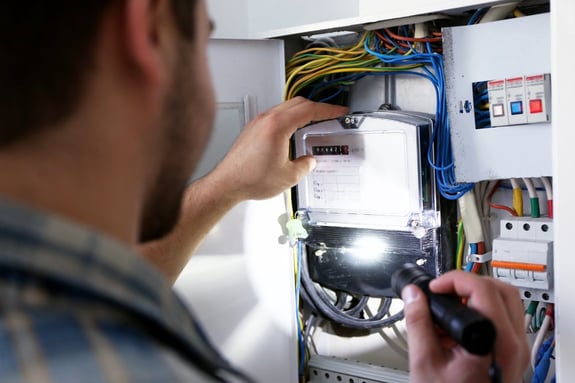
Flashlights seem like a pretty simple tool.
They usually have a button to turn on; they project light and have a power source, usually a battery. It’s pretty unusual for anyone to give much thought to flashlights and their purpose. We usually are only aware of them when the power goes out, it’s pitch black and we ran out of batteries.
So it may surprise many to know that while many flashlights bear the indignity of being a boring, common utility flashlight; there is an entire world of flashlights out there that are packed with cool benefits and features that may even save your life.
Flashlight & Industrial Hazards
Imagine you are on the job and need a flashlight to see what’s ahead. Now imagine you are in a hazardous environment where there may be gases, particulates or fibers that could suddenly ignite. You certainly wouldn’t want a regular old flashlight that could send off a tiny spark resulting in a big explosion (BOOM!).
The National Electric Code (NEC) defines hazardous locations through classes and divisions.
- Class I locations are considered hazardous due to the presence of flammable gases, liquids or vapors.
- Class II locations will have a presence of combustible dusts.
- Class III locations are those that contain easily ignitable fibers or filings.
The term "Division" refers to the likelihood that there are ignitable concentrations of flammable material present in a given area.
Division 1 environments are those that have ignitable concentrations of flammable gases, liquids, vapors or dusts existing all or some of the time under normal circumstances.
Division 2 environments are either those areas where ignitable concentrations are not likely to exist under normal conditions, or in areas that Class III materials may be stored or handled.
So whether you need the light for emergencies or to read important signage or placards in hazardous conditions, it is important to know your working environment and choose a flashlight that has been tested in those situations. It is also important to look for the markings on the body that will indicate if the flashlight has been approved for certain classes or divisions and temperature ratings.
Types of Flashlights
Let’s take a look at examples of flashlights:
- Trident® LED Headlamps have the broadest range of lighting needs- both distance and up close. Low battery indicator and hands-free LED headlamp with 3-position lighting options. Water resistant with unbreakable polycarbonate lens. Features 90° tilting head. Includes rubber and elastic straps. Class I, Div. 2 rated.
-
StealthLite™ 2410 Recoil™ LED Flashlights feature a Recoil LED module that produces true, bright, collimated LED beam. Tough, corrosion-proof, resin body is resistant to extreme temperatures. Easy-slide thumb switch. Submersible to 500'. Approvals: IECEx: ITS.09.0017X Ex ia IIC T4 Ga, Ex ia IIIC T135°C Da IP66; ETL: Class I II III Div. 1 Grps. ABCDEFG Operating Temp. Class T4.
- Xtreme Lumens™ Multi-Purpose LED Work Light features an Xtreme Lumens™ design and a Dual-brightness Floodlight with three heavy-duty integrated magnets plus a detachable magnetic hook. Single sealed push button switch powered by integrated Lithium-ion battery.
So now we know that extra safety measures must be taken in certain hazardous environments and that there are flashlights for every scenario you could think of. Not only that, these simple tools are actually built with some pretty cool benefits and features such as buttons, clips, tails and magnets that will make any job easier.
Choosing the right tool for the job not only protects the user but also makes the task easier as well. Doesn't that sound good?
Safety: Its Your Life, It's Our Business.








